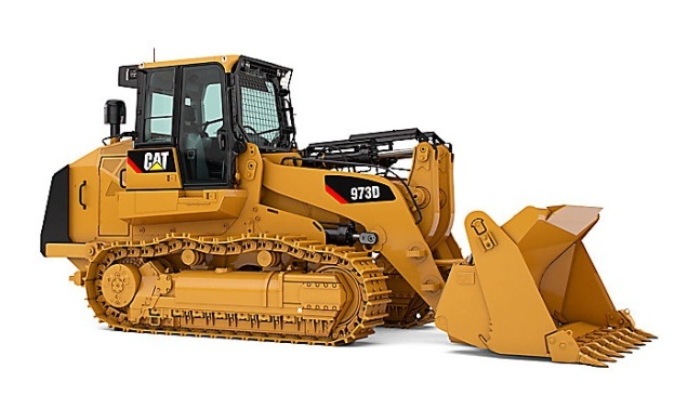Construction equipment is some of the powerful technology there is however, their strong abilities also make them some of the most hazardous machines to run. Although current equipment has supplementary safety features than earlier, operators still need to be attentive and at all times apply caution when controlling the machines.
If you work with whichever sort of heavy equipment, you must have a healthy respect for it. Most, if not all, equipment used in construction, mining, forestry, farming and other trades are gigantic and powerful – and for those grounds, naturally dangerous. And although most of us are well conscious of the risks implicated, each year around the globe there are still thousands of heavy equipment-related unpleasant incidents that lead to property damage or injuries and, unfortunately in some instances, death.
There’s by no means typically one simple comprehensive cause or one type of person we can attribute heavy equipment-related incidents to – they can happen to experienced operators as well as recently trained ones. Evidently each machine and each situation comes with its own set of risks, but there are some universal safety rules you can follow to aid you end each work day in one piece. Working with construction equipment is not an easy job. Whether an operator is a skilled veteran or newly-trained novice, safety is always a crucial matter that needs meticulous attentiveness. Below is a list of fundamental rules and safe work practices that should be observed in addition to any agency-specific safety guidelines.
- Make certain you’ve been suitably and adequately trained on the equipment you’re using by qualified, skilled people.
- Be conscious, stay alert and know your equipment’s blind spots – whether you’re the operator or just working around it.
- Correspond with people working near you – either via two-way radios or a spotter who’s been trained on standard hand signals. Never presume people know what you’re going to be doing.If ignored this can endanger the safety of everyone
- At all times wear high-visibility clothing and steel-toed boots.
- At all times wear your seat belt. It seems apparent, but it’s easily forgotten. In case of a rollover this can be a life saver.
- Don’t mount or alight the equipment while it’s moving.
- Never surpass the load that a machine is rated to carry.
- Climb on and off equipment properly. Falls are still the number one cause of injury, so never jump off equipment and always use three-point contact (both feet and one hand or one foot and both hands on the holds at all times) when climbing on or off equipment. Every person is not the same, and you can’t assume that manufacturers have your precise height and build in mind when designing their machines. Do yourself a favor and make it as simple and as safe as possible to mount and dismount your vehicle.
- Always do a walk around and inspect the equipment before you start using it. Inspect tires, tracks, components and other apparatus for fractures, damage or something caught in them.
- Always load and unload equipment on level ground to reduce the risk of rollovers, and keep the area clear.
- Exiting the vehicle
Park on level ground. Relieve pressure from all hydraulic controls. Wait for all motions to stop, safely dismount using the 3-point contact rule. Remove the key from unattended vehicles
Always remember that safety measures are fundamental and one can always be sued for negligence if you ignore the safety guidelines.


Great post. Employees safety is very important in any warehouse, your guide is very informative. Yes, Heavy machine do required more care. Thanks for sharing this useful post with us. I will save this post wo later.
Thanks for sharing these amazing tips. Heavy machines need extra care and maintenance. All your tips are useful for machine operators and machinery manufacturers. This information is very helpful.
As per study added by Value Market Research, the Construction equipments are used for various purposes in large projects depending on the size of work. Application of this equipment makes construction process easier and faster.The global construction equipment market will continue to bedriven by construction, mining and other infrastructure investments.
Safety is everyone’s responsibility. PPE is the last line of defence and other strategies and risk control measures should be put in place 1st.
It’s good that you pointed out how important it is that everyone in the workplace should know how to correspond with one another to ensure everyone’s safety. I just like to add that it’s also important to use proper protective equipment in the work environment.
Overall, great tips. Thanks for sharing!
Thanks for sharing these tips for construction equipment safety measures. These tips are very helpful.
These precautions were awesome happy to read them
I like the tip that you gave to choose to check the safety tips on your equipment before you use it. My partner and I have been talking about finding better safety measures for when we are at work, and it would be important for us to know that we could find the best tips for it. If we decide to find better safety tips, I will be sure to look for the safety tips on the equipment before we decide to use it.
I really appreciate your tip to try and keep in mind all of the blind spots of different construction equipment. My daughter told me that her class is taking a field trip to a construction site in a week. I will be sure to tell my daughter that she shouldn’t go where the machines can’t see her so she is safe.